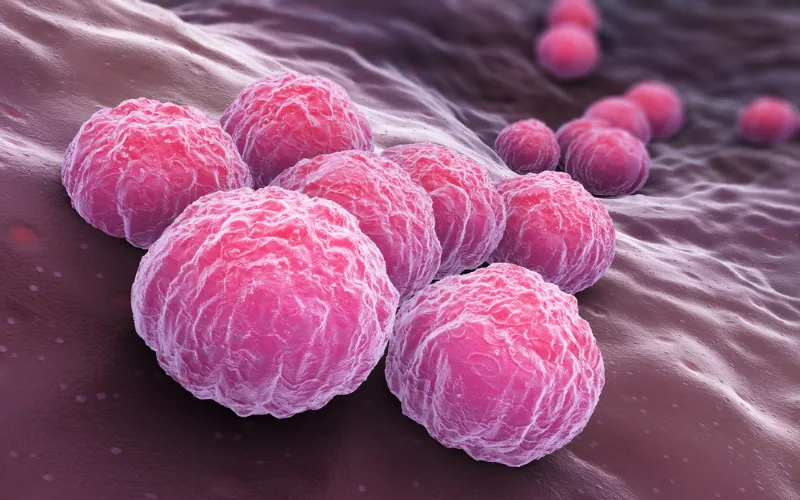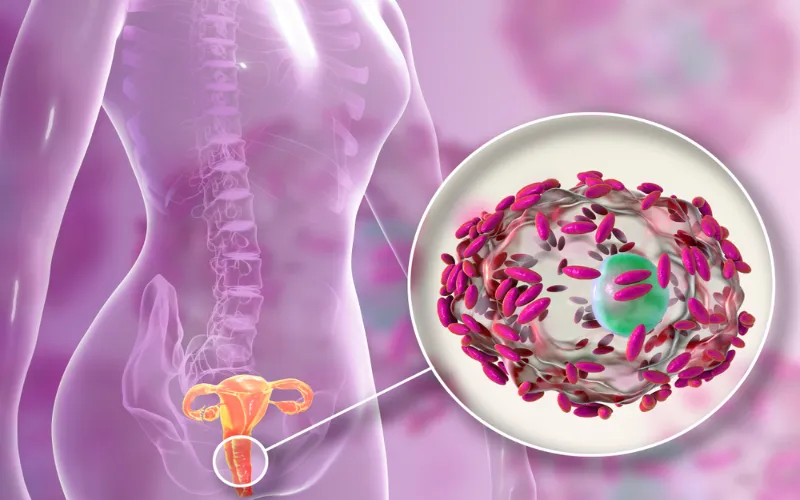When discussing women’s health, knowing the differences between common vaginal issues is important. Two common ones are yeast infections and chlamydia, but different things cause them and have other symptoms. This article will help explain the differences between them.
Yeast Infections
These infections happen when there’s too much of a fungus called Candida. This can cause discomfort, itching, and a change in discharge.
What causes them?
Mainly, they come about when our body’s natural balance of microbes gets thrown off. This can be from taking antibiotics, pregnancy, or the immune system isn’t working as it should.
What are the symptoms?
Common signs include itching, a burning feeling, redness, and swelling around the vagina. There might also be a rash and a thick, white discharge that doesn’t smell, sort of like cottage cheese.
How is it diagnosed and treated?
Usually, a doctor can tell if it’s a yeast infection by checking and sometimes doing lab tests. The usual treatment is medicine that fights off fungi.
Chlamydia
This is an STI caused by bacteria. If you’re sexually active, knowing the signs and how to prevent it is important.
What causes it?
Mainly, it spreads through sex with someone who has it, whether that’s vaginal, anal, or oral sex.
What are the symptoms?
A lot of times, there might be no obvious signs. But some people might have a change in their discharge, a burning feeling when they pee, pain during sex, or spotting between periods.
How is it diagnosed and treated?
A doctor can check using a swab or urine test. The usual treatment is antibiotics.
Comparing Symptoms: Yeast Infection vs Chlamydia
At a glance, the symptoms might seem similar, but there are subtle differences that can guide one towards an accurate diagnosis.
- Vaginal Discharge: While both conditions can cause discharge, their consistency and color might differ. Yeast infections usually result in a thick, white discharge, while chlamydia might produce a more yellow or greenish discharge with a stronger odor.
- Pain & Discomfort: Both can lead to itching and burning sensations. However, chlamydia might also cause pain in the lower abdomen, possibly pointing towards pelvic inflammatory disease in advanced cases.
- Other Associated Symptoms: Yeast infections predominantly affect the vaginal area, leading to external itching, redness, and swelling, especially around the vulva and labia. In contrast, chlamydia might cause fever, pain in the eyes, or a sore throat if transmitted orally.

Prevention
Understanding the differences between yeast infections and chlamydia is crucial for sexual and overall health.
- Safe Sexual Practices: Always use protection during sexual activity. Regular check-ups and discussions with partners about STIs are essential.
- Maintain Vaginal Health: To prevent yeast infections, avoid douching, wear breathable underwear, and change out of wet clothes quickly.
Complications and Considerations
If untreated, yeast infections and chlamydia can lead to more severe health problems. It’s essential to know potential complications and other related conditions.
Potential Complications of Yeast Infections
- Chronic Infections: Some women might experience recurrent yeast infections, which can be distressing. A distinct strain of candida or an underlying health condition could be responsible.
- Spread of the Infection: While not common, the candida fungus can enter the bloodstream and spread to other body parts, leading to more severe complications.
Potential Complications of Chlamydia
- Pelvic Inflammatory Disease (PID): If chlamydia is not treated, it can lead to PID, an infection of the female reproductive organs. This can further result in infertility and ectopic pregnancies.
- Infections in Newborns: Pregnant women with chlamydia can pass the infection to their newborn during childbirth, leading to potential pneumonia or eye infections in the baby.
- Increased Risk of Other STIs: Having chlamydia can increase the risk of acquiring other STIs, including HIV.
Related Conditions to Consider
It’s worth noting that several other conditions can mimic the symptoms of yeast infections and chlamydia, including bacterial vaginosis, trichomoniasis, gonorrhea, and herpes.
- Bacterial Vaginosis (BV): Caused by an imbalance in the bacteria found in the vagina. Symptoms can include a fishy odor and grayish discharge.
- Trichomoniasis: A parasite causes this STI, leading to itching, burning, and a frothy discharge.
- Gonorrhea: Another STI caused by bacteria. Its symptoms are similar to chlamydia, but they tend to appear sooner and can be more intense.
- Herpes: This STI causes painful sores in the genital area. Between outbreaks, the virus remains dormant in the body.

The Importance of Timely Action
Both yeast infections and chlamydia require prompt attention. Ignoring the symptoms or misdiagnosing oneself can have long-term health implications. It’s always recommended to consult a doctor for proper diagnosis and treatment. Additionally, regular screenings for sexually active individuals, open communication with partners, and safe sexual practices can drastically reduce the risks associated with STIs and other vaginal infections. Your health is paramount, so always prioritize it.
FAQs
What’s the incubation period for chlamydia?
The symptoms of chlamydia typically appear 1 to 3 weeks after exposure to the bacteria.
Can you get chlamydia from kissing?
No, chlamydia is not transmitted through kissing. It primarily spreads through sexual contact.
Is a yeast infection an STI?
No, a yeast infection isn’t an STI. An overgrowth of the Candida fungus causes it.




